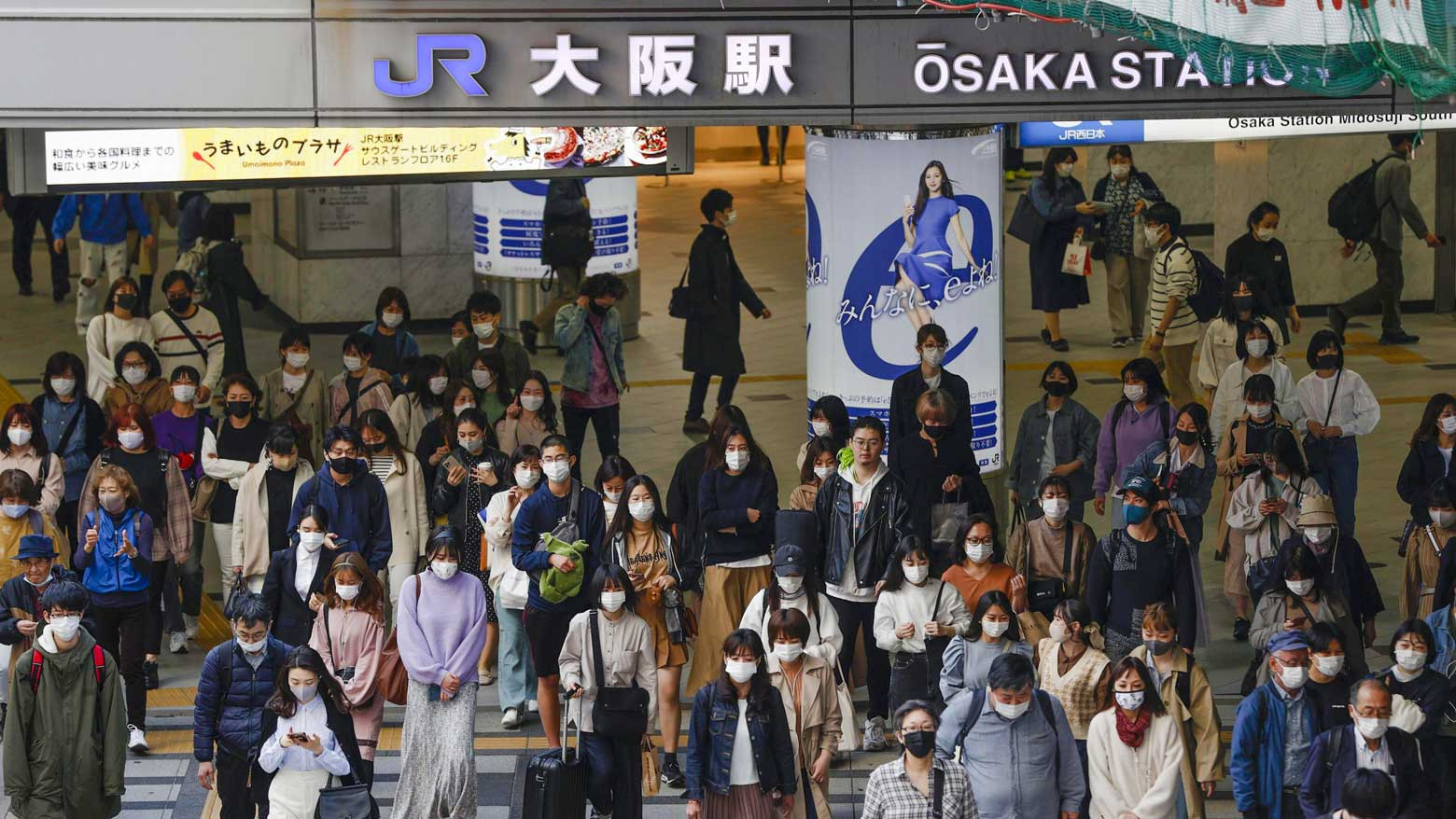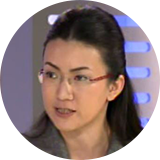"During this period, we are requesting residents to refrain from non-essential outings and will implement intensive measures," Osaka Prefecture Governor Yoshimura Hirofumi told reporters on Thursday. "I will discuss the cancelation with the Olympic organizing committee and the [city] mayor."
But his message was not all downbeat. The governor added that he hopes the relay can go ahead in other parts of the prefecture as planned.
Cases spike in Osaka
Prefectural officials confirmed 616 new infections on April 1, topping Tokyo's 475 cases on the same day. More than half the new cases involved people under 40. Officials say large numbers attending events such as farewell parties or drinking in groups account for the surge.
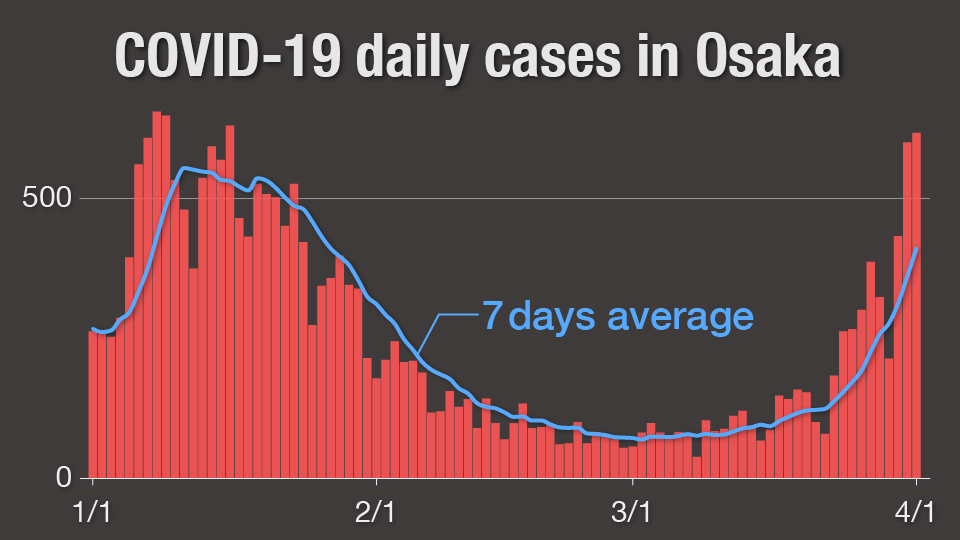
The central government gave the green light to Osaka on April 1, allowing the governor to take strict preventive steps without an emergency declaration. That comes less than a month after the central government lifted the most recent state of emergency.
The Osaka government plans to ask bars and restaurants in the city to close an hour earlier than now, at 8 p.m. Officials also want those businesses to shutter their karaoke facilities and turn away customers who don't comply with preventive measures. Owners who do not do so without justifiable reason could be fined.
"I will make wearing face masks mandatory in Osaka City," said Yoshimura. "I have already asked staff in bars and restaurants; now customers will also be asked to cooperate."
The new measures will also apply to Kobe, Nishinomiya, Amagasaki and Ashiya in Hyogo Prefecture, and Sendai City in Miyagi Prefecture from April 5 through May 5. Governors there are now also allowed to take steps with legal backing.
"I think the measure should have come earlier, especially in the western prefectures," said Japan Medical Association member Kamayachi Satoshi on Thursday. "We have many varieties of places where we are finding cluster infections, which means we should focus not only on restaurants and bars. I think more prefectures will need to impose these kinds of measures."
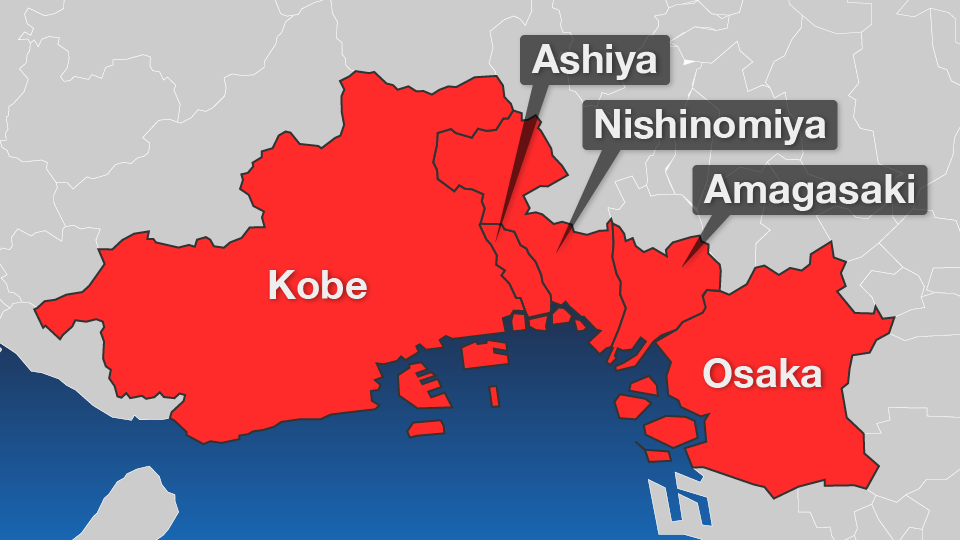
UK variants dominant
The coronavirus variants are now prevalent in Hyogo and Osaka. In Hyogo, officials report that 80 percent of 70 positive cases between March 21 and 27 had the variant first detected in the United Kingdom.
"It's likely that the variants are replacing the initial strain in the Kansai region," said Hyogo Governor Ido Toshizo on Thursday. "Most family members of an infected person are now testing positive. We assume that's because the variants are more contagious."
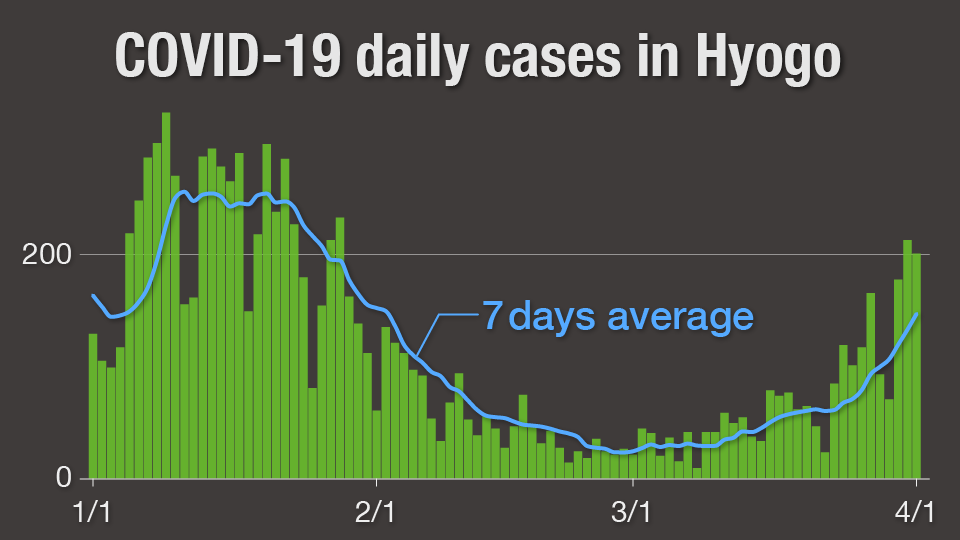
The health ministry had initially been screening about 5 to 10 percent of reported cases for variants. But officials say they've increased that to about 40 percent to better monitor the spread.
Omi Shigeru, who chairs the government advisory panel, assumes that UK variants are spreading mainly in the Kansai region, which includes Osaka and Hyogo.
